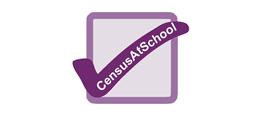- View more resources from this publisher
 CensusAtSchool
CensusAtSchool
Census at School
The CensusAtSchool UK project began in 2000 in conjunction with the National Statistics Office. The project, originally a one-off, was linked to the UK population census of 2001. It has now developed into a dynamic, ongoing and exciting initiative running in a number of countries.
It aims to:
• Involve students in collecting data about themselves and improve understanding of a data gathering process, its purpose and benefits to society
• Foster a positive attitude to statistics through using real data that is of interest to students
• Enhance the process of statistical enquiry across the curriculum
• Encourage effective Information and Communication Technology (ICT) teaching and learning, including the use of the Internet
• Provide access to large and meaningful data sets
• Make comparisons between the student responses in different countries.
This collection of resources from the project covers the whole primary and secondary age range. They have been written to help teachers use CensusAtSchool data in their classrooms, most are in worksheet format but many include data sets that run in Excel. A few solutions are also included.
These resources are made available under an open government licence v3.0.
Resources
Filter
A Modal Pupil
This resource from CensusAtSchool produces descriptions of modal pupils using the data taken both from the original CensusAtSchol data and Phase Two of the project. The task encourages students to discuss and think about the merits of using averages.
The mathematical topics of mean, median and mode are used...
Fillings
In this resource from CensusAtSchool, students are asked to apply their knowledge of the Poisson distribution to real life data in the context of a school problem. This resource is good at contextualising and reinforcing understanding of the Poisson distribution, it requires students to consider developing a...
Relative Frequency
This resource from CensusAtSchool uses the ideas of estimating probabilities through finding the relative frequency of given data about favourite subjects at school. It uses sampling from different populations and investigates the effect of sample size on the estimated probability.
Too Many Boys in the Family?
A question posed by this resource from CensusAtSchool, investigating whether probability relates to reality. Real data is contrasted with the theoretical probabilities of the number of boys in a family, using the assumption that the probability of having a boy is 0.5. Equally likely outcomes, combined events, tree...





